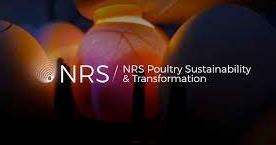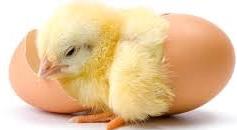 NRS Poultry Sustainability and Transformation Inc.(NRS) has developed a genetic approach to the challenge of eliminating unwanted male chicks by applying a genetic approach coupled with the application of an optogenic system. The Company was founded by Dr. Uval Cinnamon of the Volcani Institute, the leading agricultural research organization in Israel and recognized as an innovator in agriculture. The company includes specialists such as Dr. Yaarit Wainberg a molecular biologist and executives with experience in finance, technology transfer, regulatory affairs and quality assurance. The company is assisted by Dr. Neil O’Sullivan appointed as the Senior Scientific Advisor previously a senior geneticist with one of the two major primary breeders of egg-laying strains Dr. O’Sullivan is well-known to the U.S and the World’s egg industries and bridges the academic avian genetics with practical production issues. Dr. Cinnamon recently delivered a presentation in a webinar series dealing with the technology of his company and the potential to resolve a growing problem of negative public perception. He described the mechanism by which it is possible to hatch only pullet chicks at the commercial level with male embryos failing to develop at an early stage of incubation.
NRS Poultry Sustainability and Transformation Inc.(NRS) has developed a genetic approach to the challenge of eliminating unwanted male chicks by applying a genetic approach coupled with the application of an optogenic system. The Company was founded by Dr. Uval Cinnamon of the Volcani Institute, the leading agricultural research organization in Israel and recognized as an innovator in agriculture. The company includes specialists such as Dr. Yaarit Wainberg a molecular biologist and executives with experience in finance, technology transfer, regulatory affairs and quality assurance. The company is assisted by Dr. Neil O’Sullivan appointed as the Senior Scientific Advisor previously a senior geneticist with one of the two major primary breeders of egg-laying strains Dr. O’Sullivan is well-known to the U.S and the World’s egg industries and bridges the academic avian genetics with practical production issues. Dr. Cinnamon recently delivered a presentation in a webinar series dealing with the technology of his company and the potential to resolve a growing problem of negative public perception. He described the mechanism by which it is possible to hatch only pullet chicks at the commercial level with male embryos failing to develop at an early stage of incubation.
 The egg industry is responding to criticism that male chicks at the commercial level are euthanized amounting to an annual disposal of five billion. For the past decade, research institutes have attempted to differentiate between fertile eggs with either male or female embryos. A variety of techniques have been applied including various forms of spectrometry most of which require the installation of sophisticated equipment and training of personnel. Alternatives such as analysis of embryonic fluids for the presence of testosterone or estrogen as developed during the late 1980’s for gender separation of broiler chicks for separate-sex rearing have been updated and applied to fertile eggs at the commercial level. As yet there has not been any suitable technical solution that is compatible with the operation of a hatchery producing in excess of 25,000 pullet chicks per hour. Technical development funded by various agencies and governments with Germany an active promoter has yet to produce a practical system. Unfortunately various startups have raised venture capital funding claiming applicable technology without achieving commercial acceptance. Some of the claimants have raised funds without any proof of concept and are regarded as outright scams.
The egg industry is responding to criticism that male chicks at the commercial level are euthanized amounting to an annual disposal of five billion. For the past decade, research institutes have attempted to differentiate between fertile eggs with either male or female embryos. A variety of techniques have been applied including various forms of spectrometry most of which require the installation of sophisticated equipment and training of personnel. Alternatives such as analysis of embryonic fluids for the presence of testosterone or estrogen as developed during the late 1980’s for gender separation of broiler chicks for separate-sex rearing have been updated and applied to fertile eggs at the commercial level. As yet there has not been any suitable technical solution that is compatible with the operation of a hatchery producing in excess of 25,000 pullet chicks per hour. Technical development funded by various agencies and governments with Germany an active promoter has yet to produce a practical system. Unfortunately various startups have raised venture capital funding claiming applicable technology without achieving commercial acceptance. Some of the claimants have raised funds without any proof of concept and are regarded as outright scams.
NRS has applied CRISPR-Cas9 to a sequence of the z chromosome, a co-determinant of gender in chickens. Males carry the zz chromosome and females are zw. The construct developed by NRS comprises promoters adjacent to the 5’HA end of the sequence, and a lethal gene adjacent to the 3’HA end. Lethality is activated by exposure to light of a highly specific wavelength. The construct must be inserted into the pure line C strain to be passed to the grandparent C-line hen. The female of the parent level (CD) will carry the modified z chromosome. The male line AB parents are normal in all respects. At the parent level, CD females carrying the modified z chromosome mated to AB males produce pullet chicks with a normal z chromosome and a w chromosome. Eggs from the mating are subjected to blue light that is optogenic in its action on the z chromosome carrying the lethal gene. This results in inhibition of development of male (zz) embryos since they carry the lethal trait on the z chromosome acquired from the CD parent female (zw). Female embryos carry an unaltered z chromosome and therefore hatch normally.
The NRS genetic approach to elimination of male chicks is elegant, based on established scientific principles and offer advantages with respect to cost, practicality and rate of implementation. As yet there has been no inclination for primary breeders to adopt the system and the technology has not been patented. Informal discussion with representatives of the two major breeding companies responsible for over ninety percent of the egg laying strains used in the U.S. have indicated a disinclination to embrace the NRS approach. Despite the justifiable claim that pullet chicks are not genetically modified, the system relies on insertion of a construct into the pure C line. Opponents of intensive livestock production will obviously use the application of GM to oppose not only the specific products that may be modified but to deprecate all commercial egg production. It is obvious that neither of the two major primary breeders wishes to be the first to adopt the technology.
The second problem relates to the point at which the optogenic light is applied. Too save incubator space, eggs would have to be subjected to the activating light prior to setting. It is understood that in experimental scale application the light is applied after placement of eggs resulting in death of embryos in the early stage of incubation. This would require removal of all eggs carrying undeveloped male embryos within a few days of incubation. Eggs with viable female embryos would be affected by non-uniform temperature as activation of the lethal gene by lighting is currently effected in the setter. Removal of eggs containing dead male embryos would have to be carried out by manual or mechanized candling or temperature measurement at approximately five days of incubation. This would impose an additional process in incubation requiring development of automated equipment and requiring capital expenditure, modification of hatcheries and additional time and labor.
Despite claims to be a practical solution to the challenge of culling cockerel chicks, the NRS approach, although scientifically elegant will not achieve any commercial acceptance in the short term given the restraint of the “GMO association”. It is possible that a nation such as China may adopt the technology given their volume justifying application. China as yet does not have pure lines although it has aspirations to be independent of the major primary breeders and eventually become an international supplier of breeding stock.
NRS Poultry Sustainability and Transformation represents a company with excellent potential but with a major restraint to commercialization given the need for primary breeders to insert the construct into the z chromosome of the C-line. The future of the system would be assured if consumers would be willing to accept the genetic modification of the pure line as a compromise for eliminating the euthanasia of commercial cockerels. Similar ethical challenges are presented by accepting vaccines that were developed using human fetal tissue or willingness to consume irradiated foods that are free of pathogens.
For NRS technology to become a practical reality the first hurdle will be for one or more primary breeders to enter into a strategic alliance with NRS and incorporate the NRS construct into the C pure line. The second will be to convince consumers and regulators that the pullet chicks are effectively non-GMO. Since the issues are entwined the commercialization of NRS technology is truly a manifestation of the “chicken-or-the-egg” paradox.